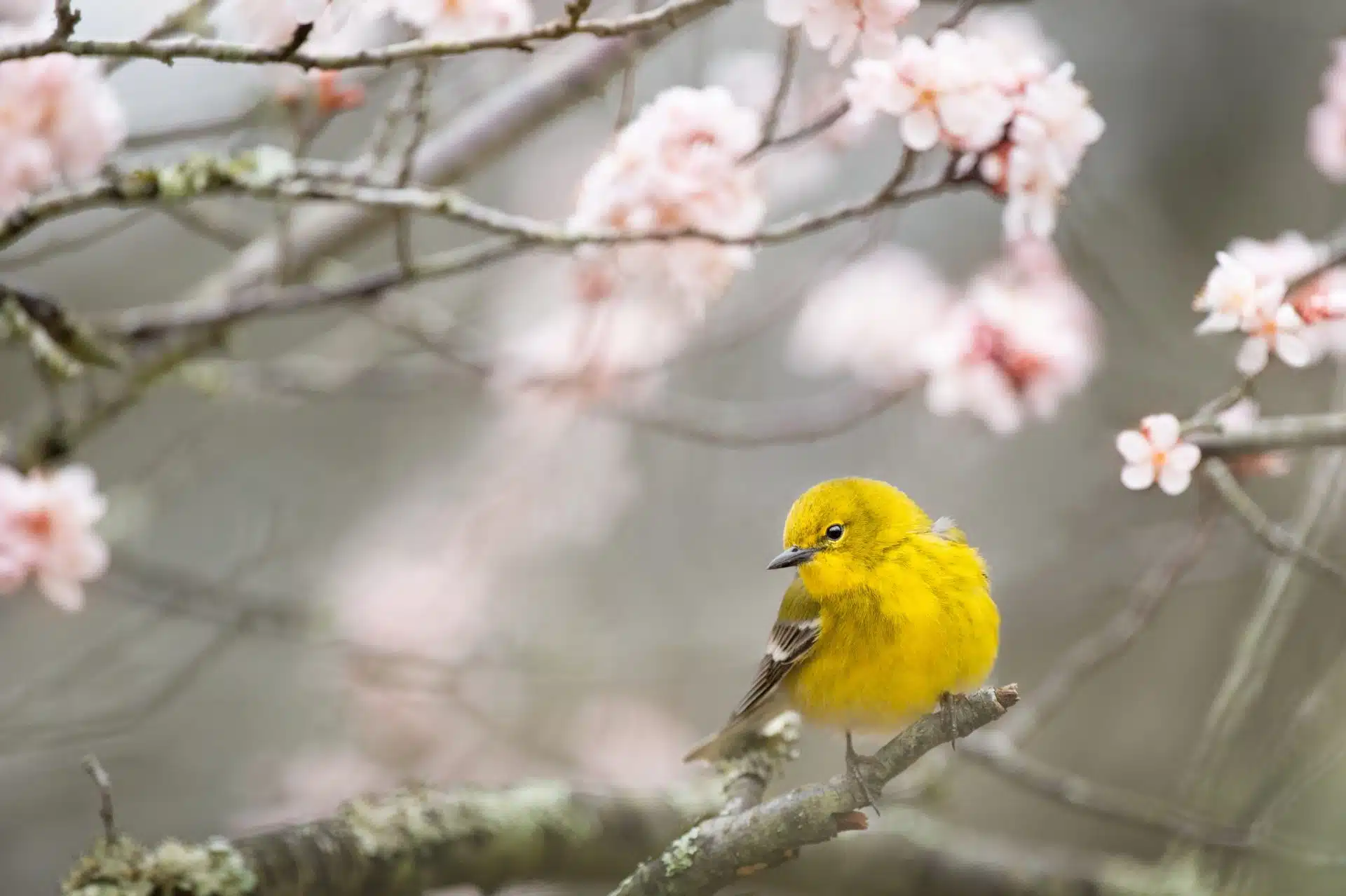Birds
Yellow Warbler
Setophaga petechia

Voice: Sweet, high and clear notes, “Sweet, Sweet, Sweet, I’m so sweet.”
Yellow warblers are one of the easiest warblers to recognize in Ohio. They are properly named yellow warbler because they are the brightest and most extensively yellow of all warblers. They are the only warbler with yellow tail spots. Yellow warblers can be quite tame and show little fear of humans. However they are sometimes hard to view because of the wet, brushy, successional habitats they inhabit including riparian edges, fence lines and old fields.
Male yellow warblers arrive in Ohio in mid-April, a few weeks before the females. Soon after they arrive males begin to select and defend their territories. Male yellow warbler territorial requirements include suitable nest-sites with concealing cover, tall singing posts, and feeding areas in trees. Once the females arrive, males court the females with their loud, high and clear song. They are primarily monogamous and form pair bonds.
Females build nests in forked branches of small saplings or shrubs. The nest is made of bark and grass, and lined with plant down and hair. Males bring food to the females while they are incubates 4 to 5 gray, green or blue with olive and brown mark eggs for 11 to 12 days. Snakes and large climbing rodents are significant nest predators. Red fox and domestic or feral cat are known to prey on young yellow warblers and eggs. The biggest threat to yellow warbler nests are cowbirds. Cowbirds frequently parasitized the nest by laying their eggs amongst the yellow warbler eggs. However yellow warblers have adapted to recognize abnormal eggs and often build a new nest directly on top of the parasitized one, sometimes resulting in nests with up to six tiers. Yellow warblers are the only birds that have a regular and relentless response to the repeated egg laying from the cowbird.
Once all eggs have hatched both parents feed the young. The young leave the nest 8 to 10 days after hatching. The parents continue to feed the young for up to three weeks after they leave the nest. Yellow warblers search for food at various levels in brushy vegetation. Generally males forage higher in vegetation than females. They glean insects including caterpillars, beetles, and other small arthropods from small limbs and leaves. Besides gleaning for insects they also have been known to fly out and catch insects midair or forage for fruit on branches.
Yellow warblers are one of the first neotropical migrants to leave Ohio in early to mid- September. They are generally common and occur over a wide range. Local population loss is generally due to habitat destruction and pollution, mainly by land clearing and overuse of herbicide and pesticide in agriculture.
Best Location to View: Blueberry Pond, Butterfly Garden, Corning Lake
Color: Male: Face, throat, and under parts bright yellow. Chest streaked with reddish brown lines below throat. Female: Under parts bright yellow. Back and most of face greenish-yellow.
Range: Breeding Atlantic to the Pacific in both Canada and the United States and from the Barren Grounds in northern Canada to Mexico and the Gulf States. Winters in Central and South America
Size: 5"
Wingspan: 8"




